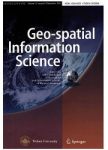LEO satellite clock analysis and prediction for positioning applications
作者机构:School of Earth and Planetary SciencesCurtin UniversityPerthAustralia
出 版 物:《Geo-Spatial Information Science》 (地球空间信息科学学报(英文))
年 卷 期:2022年第25卷第1期
页 面:14-33页
核心收录:
学科分类:0303[法学-社会学] 0709[理学-地质学] 08[工学] 0708[理学-地球物理学] 0804[工学-仪器科学与技术] 080402[工学-测试计量技术及仪器] 0705[理学-地理学] 0813[工学-建筑学] 0833[工学-城乡规划学] 0812[工学-计算机科学与技术(可授工学、理学学位)]
主 题:LEO clock prediction USO OCXO relativistic effects
摘 要:The positioning service aided by low Earth orbit(LEO)mega-constellations has become a hot topic in recent years.To achieve precise positioning,accuracy of the LEO clocks is important for single-receiver users.To bridge the gap between the applicable time of the clock products and the time of positioning,the precise LEO clocks need to be predicted over a certain period depending on the sampling interval of the clock products.This study discusses the prediction errors for periods from 10 s to 1 h for two typical LEO clock types,i.***.the ultra-stable oscillator(USO)and the oven-controlled crystal oscillator(OCXO).The prediction is based on GNSS-determined precise clock estimates,where the clock stability is related to the GNSS estimation errors,the behaviors of the oscillators themselves,the systematic effects related to the environment and the relativistic effects,and the stability of the time reference.Based on real data analysis,LEO clocks of the two different types are simulated under different conditions,and a prediction model considering the systematic effects is proposed.Compared to a simple polynomial fitting model usually applied,the proposed model can significantly reduce the prediction errors,i.***.by about 40%-70%in simulations and about 5%-30%for real data containing different miss-modeled effects.For both clock types,short-term prediction of 1 min would result in a root mean square error(RMSE)of a few centimeters when using a very stable time reference.The RMSE amounts to about 0.1 m,when a typical real-time time reference of the national center for space studies(CNES)real-time clocks was used.For long-term prediction of 1 h,the RMSE could range from below 1 m to a few meters for the USOs,depending on the complexity of the miss-modeled effects.For OCXOs,the 1 h prediction could lead to larger errors with an RMSE of about 10 m.



